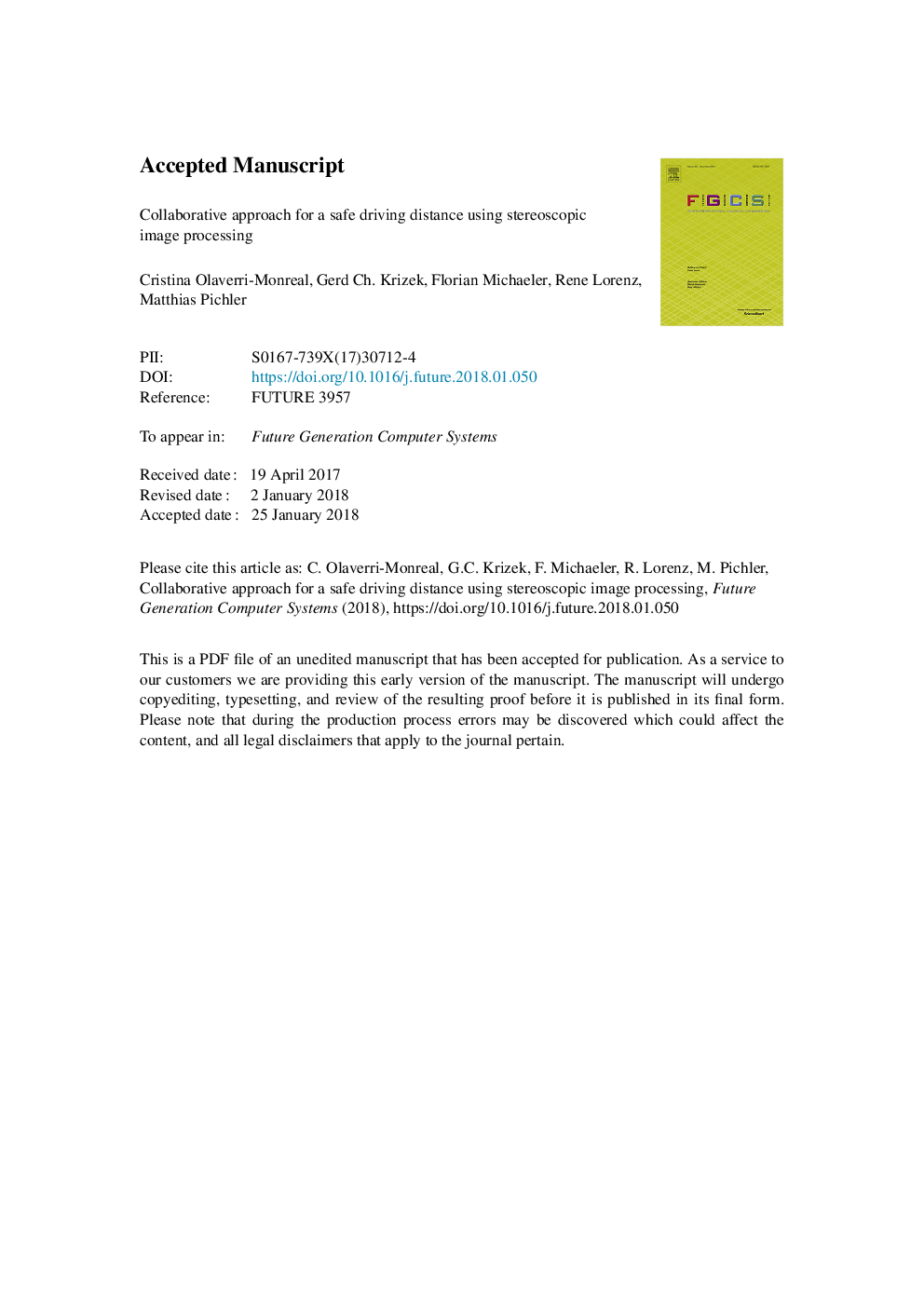ترجمه فارسی عنوان مقاله
رویکرد همکاری برای فاصله یابی ایمن با استفاده از پردازش تصو یری تصویری
عنوان انگلیسی
Collaborative approach for a safe driving distance using stereoscopic image processing
| کد مقاله | سال انتشار | تعداد صفحات مقاله انگلیسی |
|---|---|---|
| 152312 | 2018 | 31 صفحه PDF |
منبع

Publisher : Elsevier - Science Direct (الزویر - ساینس دایرکت)
Journal : Future Generation Computer Systems, Available online 2 February 2018
ترجمه کلمات کلیدی
00-01، 99-00، سیستم های تعاونی، تیلگات، فاصله ایمنی، تصور تصویر،
کلمات کلیدی انگلیسی
00-01; 99-00; Cooperative systems; Tailgating; Safety distance; Image capturing;
ترجمه چکیده
نادیده گرفتن قوانین مربوط به حداقل فاصله ایمنی باعث می شود اجتناب از تصادم عقب تقریبا غیرممکن باشد. در یک تلاش مشترک برای افزایش ایمنی و بهبود فرایندهای تصمیم گیری در سطح فردی، ما با استفاده از یک سیستم نوآور و مقرون به صرفه که به وسیله وسایل نقلیه شناسایی شده و سیستم هشدار از راه دور عقب را قادر می سازد تا موقعیت های خطرناک را شناسایی کنیم، و همچنین می تواند وسایل نقلیه دیگر خطر را مستقل از قابلیت های ارتباطی یا تجهیزات خود به اطلاع برساند. سنسورهای دیداری اطلاعات را از طریق تصحیح و پردازش تصویر از طریق دوربین های عقب به منظور محاسبه فاصله بین وسایل نقلیه پیشرو و زیر انجام می دهند. داده های بصری مربوط به فاصله ایمنی به وسیله نقلیه زیر در زمان واقعی ارائه می شود و براساس یک فرآیند مشارکتی غیر همزمان انجام می شود. تجزیه و تحلیل خطای دقیق از محاسبه فاصله بر اساس روش اندازه گیری و هندسه جاده ارائه شده است. بر اساس ارتباط بین دو خودرو، سیستم درون خودرو با سیستم هشدار از راه دور عقب در شرایط آزمایشگاهی مقایسه شد. پارامترهای تعامل سازمانی هر دو انسان از لحاظ تاثیر آنها در پاسخ راننده مورد بررسی قرار گرفتند. نتایج نشان داد که هر دو سیستم بر راننده در حفظ فاصله زمانی دو ثانیه تاثیر گذاشت.

